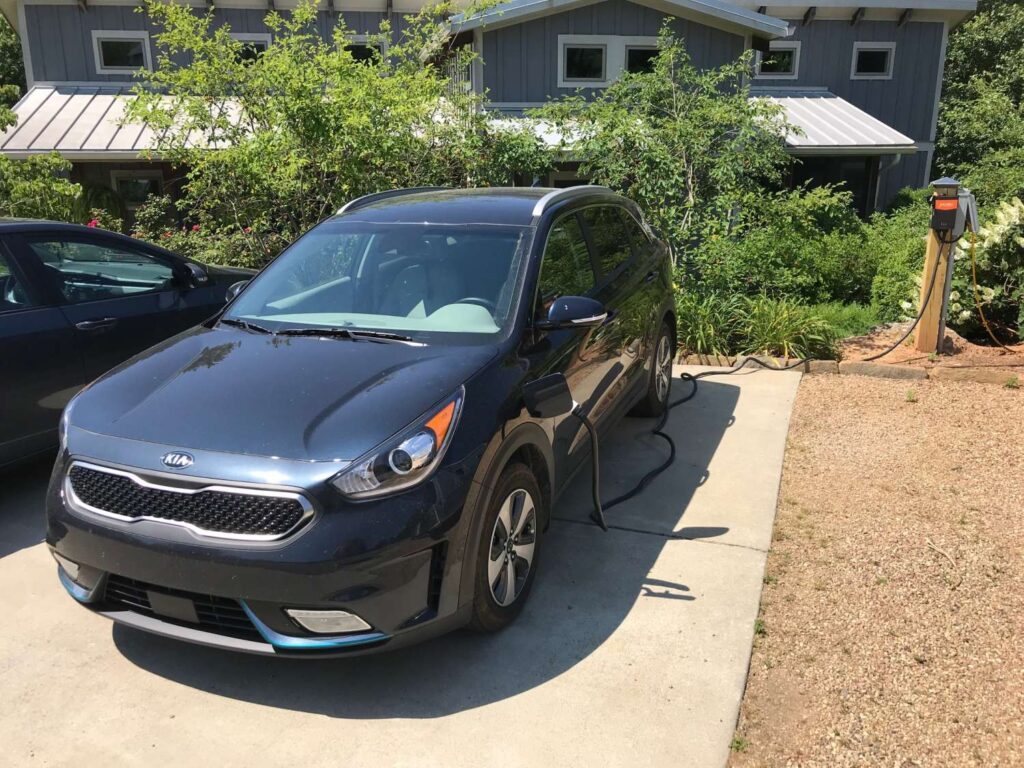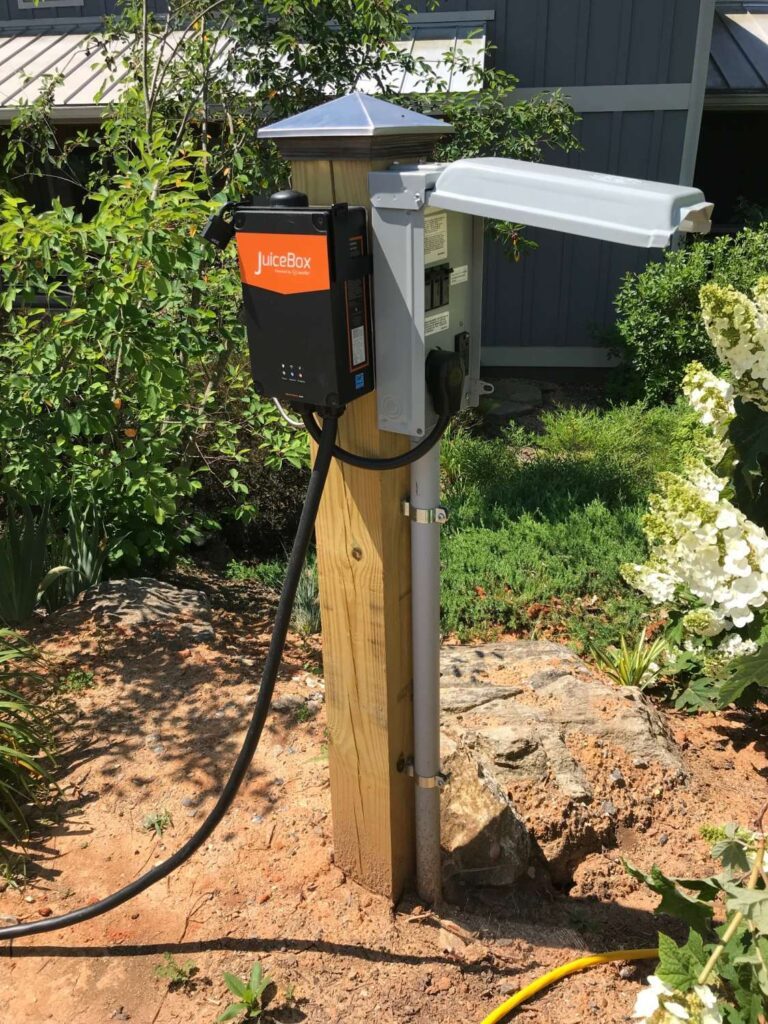Amy Musser and Matthew Vande
We recently took the plunge to buy a plugin hybrid electric car, and wanted to share some things we’ve learned from our experience to help people in Western North Carolina plan for future plug-in cars.
Our driveway sits about 75 feet away from our house and once we coordinated someone to dig the trench and a licensed electrician to run the electrical line out to the driveway, we were able to decide on the level 2 car charger we wanted to use.

There are several excellent chargers on the market, but the one we chose had a 40A charging option (faster rate of charging), multiple charging schedules (which we needed for our time-of-use electric rates), connected to our wireless network, and allowed us to monitor and control the charger via a phone app.
The charger allows us to fully charge the car battery in less than two and a half hours — much less than the 8 hours it used to take with the 110-volt charger which plugged into a standard outlet.
To determine how much electricity you are likely to use, you need to know how many miles your car travels per charge, and how many miles you typically drive in a day. If you are getting a plug-in hybrid that can operate on gas sometimes, you will likely use some gas on long trips but mostly use electricity when you’re driving around home.
If you have active photovoltaic (PV) panels or plan to incorporate solar in the future, it’s a good idea to estimate how much electricity the car will use, and make sure you either install enough panels to cover the car’s usage, or confirm that the system you do install is capable of easily adding enough solar for a car in the future. You would need to talk to your solar installer about choosing an inverter large enough to handle the additional solar, using microinverters, or having a combi-electric meter for the home that will allow solar to feed directly into the meter, bypassing the home’s electric panel.

Before the electric car, our house was essentially operating at close to net-zero energy. The car definitely increases our usage, and we will need to account for this with additional PV panels to get back to net-zero status.
A rule of thumb previously used by the Green Built Homes program is that 2kW of additional south-facing solar PV capacity is needed to charge a car. The following example calculation shows how you can customize this for your own situation.
A typical small electric car gets about three miles per kWh. One car company estimates the average driver uses about 2,520 kWh per year, which would be an average of 20 miles per day (or 7,308 miles per year) of electric driving. Meanwhile, a 1kW south-facing solar panel in Asheville with no shading and typical mounting angles and inverter efficiencies will produce about 1,400 kWh per year.
So if you take our typical electric car driver with 2,520 kWh per year in electricity consumption and divide that by the 1,400 kWh per year produced locally for each kW of installed PV, we get 1.8kW of additional PV capacity needed.
If you drive more, are buying a car with a longer battery range, or need a larger vehicle that gets fewer miles per kWh, you may require more solar. And if you drive less, you may not need as much.
We built our house in 2011. Back then, no one was planning for electric cars.
That is definitely changing, though. Many of the builders we work with now run a 240-volt line to the parking area so adding a car charger is simply plug-and-play. It’s by far the cheapest time to do this work.
If we could go back in time, we would have run the 240-volt line out to the driveway when everything was still exposed and we knew where the utilities were laid. Waiting to do this work until 2019 meant we had to pull an electrical permit with the city, hand dig the trench out to the driveway so we didn’t damage any utilities, and repair pathways and landscaping when it was all complete.
What would have cost a couple hundred dollars back when the house was being constructed easily ended up costing more than $1,500 by waiting until the house was finished. It was definitely still worth it for us, but those who are still in the planning stages of building their new home definitely have the advantage of working this into their construction schedule.
Amy Musser and Matthew Vande are the owners of VandeMusser Design, PLLC. They provide Home Energy Rating (HERS) services, green design consultation, and home energy audits to homeowners in Western North Carolina. Amy is a licensed mechanical engineer and Matt is a licensed architect. Connect with Amy and Matt at vandemusser.com.
You can also view this article as it was originally published on pages 52-53 in the 2019-2020 edition of the directory.

